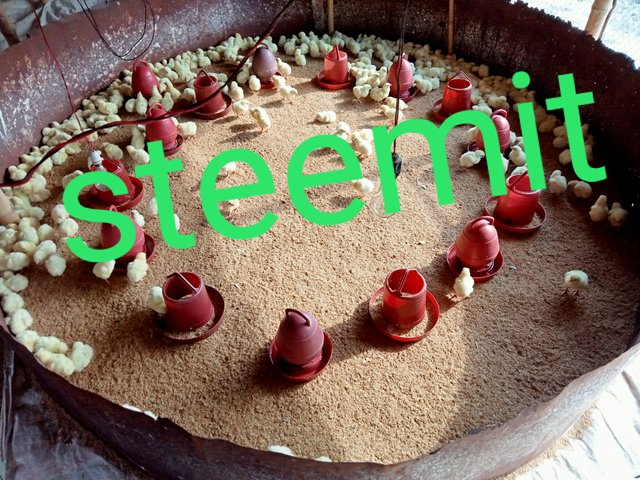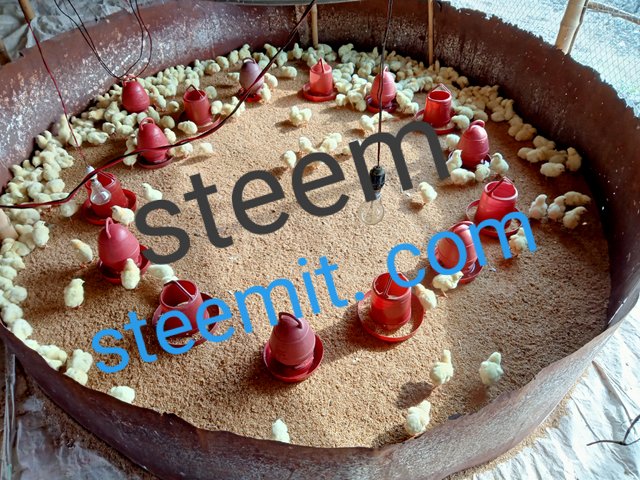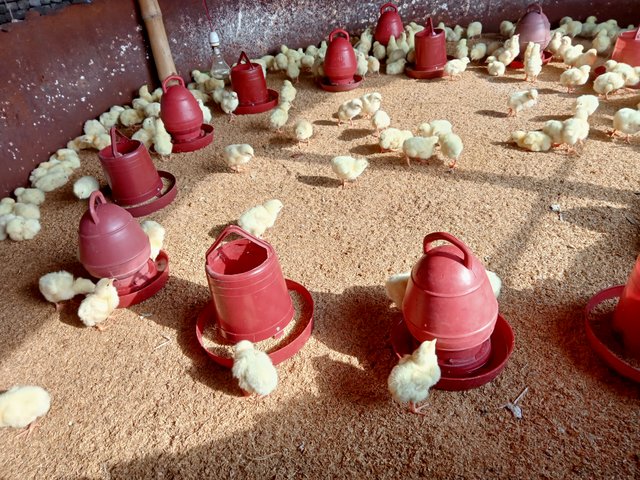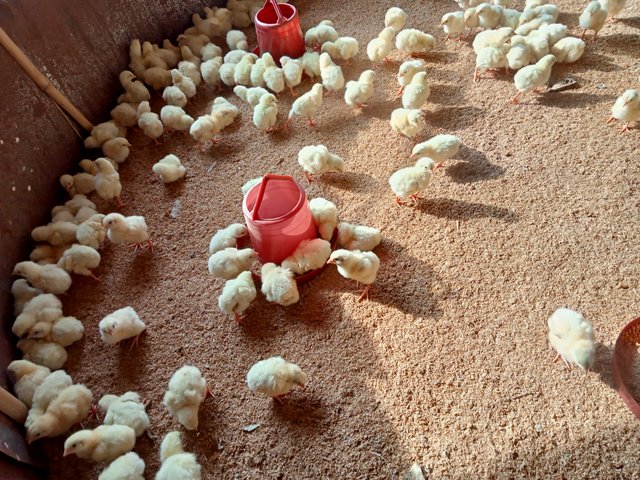Method of brooding broiler chicks.
Brooding A Hen is a very difficult method of brooding, but it is not difficult. Know the rules of brooding. If you have the equipment, it is not very difficult to raise ducks and chickens. It is really easy to raise chickens. With a few pieces of equipment and a small space to keep them, brooding and rearing must be successful in this period of the chicken's life, the most important requirement is heat, warmth, protection, food and water.
These aspects must be considered when raising chicks of any breed of duck, chicken, native chicken, turkey, tirtha, broiler, sonali, layer or any other production chicken. Visit Agrohavenbd (agrohavenbd) to get information on how long brooding is required for breeding, necessary ingredients, brooder house or house, brooding hover, brooder, budding chickguard, house lighting and lighting management, brooding temperature and its management, poultry farming. . All the details of brooding are discussed below:
How to brood chickens
Image of brooding method


It is said that 90% of the success of raising chickens depends on brooding skills. However, 99% of new entrepreneurs in our country started raising chickens without any clear idea or practical knowledge about this important subject. The result is zero. Within a few days their gossip was buried. Incomplete brooding is one of the major causes of premature death of various types of poultry such as poultry, poultry, turkeys, partridges etc. An entrepreneur with two hands can overcome this situation and be successful by gradually filling the bag of experience. However, most of the entrepreneurs are frustrated as they are not able to overcome this pressure. So brooding is very important.
Let's find out about brooding, the word brooding comes from the German word brood. Which means given heat. In fact, brooding means protecting babies from 1 day of age to 4 weeks of age from all adverse conditions such as adverse weather, germs and other problems. For example, a one-day-old baby has a body temperature of 103 degrees Fahrenheit and an adult chicken has a body temperature of 106 degrees Fahrenheit.
Babies cannot control their body temperature in infancy, they do not develop heat-regulating organs at this time. As a result it cannot tolerate cold, wind, rain or excess heat. For which the baby should be kept in an artificial position so that the baby is comfortable and safe and the baby develops due to heat control. After four weeks the chicken's heat regulating organs reach maturity and since then the chicken has acquired the ability to control heat.
If the brooding is right or you can do the brooding properly then it can be said that you can be a successful master. If for some reason your baby has low heat in the brooding or has a minor illness, you will have to pay for it. Whether it is turkey, broiler, golden or native chicken, you will eat the profit of that batch in molasses ants.
How long does brooding have to be done?

In the climate of our country, brooding for broiler, golden, layer or domestic chickens should be done for 2 weeks or 3 weeks and in case of turkey chicks it should be done for 3 to 4 weeks.
And in winter this period is extended by a few more days. Brooding is usually done for 3 weeks or 4 weeks in broiler, golden, level or native chickens and 4 weeks to 5 weeks in case of turkey chicks.
Chicken feed
From the egg, some of the yolk remains in the abdominal cavity of the newly hatched baby from which the baby can survive for the first 2-3 days without any food or water. However, providing food and water late after bringing the baby to the farm can slow down the growth rate and increase the mortality rate, so pure water should be given as soon as possible. Babies should be fed at least 3 to 6 hours after watering. Initially, .1 gram of glucose, vitamin C and multivitamin should be mixed in 1 liter of water. Food should not be provided before watering. It reduces the baby's physical growth and food conversion efficiency and increases mortality. For the first 2-3 days, along with food, water mixed with electrolytes should be given which protects the baby from dehydration and all kinds of disturbances.


Ingredients for brooding:
Brooder house.
Hover.
Brooder.
Chickguard.
Indoor lighting and lighting management.
Temperature and its management.
The ingredients required for brooding are discussed below:
Brooder house
It is better to have a separate room for brooding. Brooding is best done at a distance of at least 100 feet from a large chicken coop. Care should be taken to ensure that open air from outside can enter the brooder room and polluted air from inside can easily pass out. Layer or broiler rearing houses can also be used as brooder houses. But in that case first you have to do the following.
1, At least 1 week before raising the baby, the floor of the house should be cleaned and washed well with disinfectant.
2, if possible, the whole house should be washed and wiped with a sack or polythene. Fog can be achieved by the formation of formaldehyde gas by potassium permanganate and formalin. 120 ml for every 100 cubic feet of space, 60 g of potassium permanganate with formalin can be used.
Use of hover in brooder:
Care should be taken so that the hover light or heat does not go upwards. Hover can be made of tin, wood or curved bamboo. The hover is usually hung. However, it can be kept down with the feet. The five-foot-diameter hover can heat 500 children.
Brooder or artificial heat
The source of heat in a chicken coop is called a brooder. Artificial heat can be used as a brooder using electric heaters, kerosene lamps, hijackers, etc. It is usually sufficient to use 2 bulbs of 100 watts and 1 bulb of 60 watts in summer and 2 bulbs of 200 watts and 2 bulbs of 100 watts in brooders for every 500 children in winter. . Turn on the brooder 10 to 12 hours before leaving the baby in the brooder and give the necessary heat.
Chickguard
A 1.5 feet high mat or hardboard or wire mesh fence is made at a distance of 2.5 to 3 feet from the brooder. As a result the baby cannot move away from the brooder. Chickguard diameter 12 feet (diameter 6 feet) size for every 500 children = 3.14 x 36 = 113.04 square feet). Each child's space will be 113.04 / 500 = 0.217 square feet. The height of the chickguard will be 1'-6 "in summer and 2'-6" in winter. The circumference or space of the chickguard should increase as the baby gets older.
Lighting and lighting management:
Adequate lighting should be provided in the baby's room so that the baby can easily see the food and water leaves. There is no need to give separate light during the day. However, electric bulbs should be lit at night or artificial lighting should be provided. From 3 days after brooder tea hatching, it should be kept dark for 1 to 2 hours at night. So that children can adapt to darkness and not be afraid of darkness without electricity.
Temperature management:
By 4 weeks after hatching, the baby's body heat-regulating organs do not fully develop. So this time the baby has to be heated artificially. In the first week, brooding is usually started with 95 degrees Fahrenheit. This temperature should be gradually reduced to the following levels.

Age of the child (day) Applied temperature F / C
01-07 days 95/35 f / s.
06-14 days 90/30 Fahrenheit / Cell.
15-21 days 75/29 f / s.
22-26 days 60/26 Fahrenheit / Cell.
29-35 days 75/24 f / s.
36-42 days 60/21 f / s.
The temperature listed above is the temperature of the brooder room and this temperature can be easily determined with the help of a thermometer. It should be kept in mind that the temperature after vaccination is 10C. Will increase. This makes the baby respond well to the tick. Also make sure that the place is well ventilated and that all the children are getting enough light.
Our team will help you with various agricultural issues online. Join our Facebook page and Facebook group to get more information about agriculture. Thanks for staying with agrohavenbd.
What is brooding, rules of brooding, what is brooding, what is brooding, brooding method, brooding management, brooding room preparation, how many types of brooding, what is brooding, broiler brooding, brooder key, gas brooding, hot brooding, brooder house, Brooder house, brooding the meaning, brooding turkey brooding, brooding turkey brooding, brooder making, brooder temperature, chicken brooding temperature, brooder price,
Brooder pneumonia, poultry brooding, chick brooding method, broiler chicken brooding method, quail bird brooding, broiler brooding, chick brooding, farm chick brooding management, chick chick brooding, chick brooding, chick brooding, chickens Chicken Brooding, Chicken Brooding, Chicken Brooding, Chicken Brooding, Golden Chicken Brooding, Golden Chicken Brooding, Domestic Chicken Brooding, Layer Chicken Brooding,
What is a brooder machine, what is a breeder seed, what is a breeder seed key, what are the rules for producing a breeder seed, what is a breeder seed, what is a breeder seed, duck brooding, laughter brooding, brooder house a brooding hen, a brooding chicken, the brooding meaning, brooding to cording, to brooding over, brooding do, do brooding hens eat, do brooding chickens eat, do brooding hens, do brooding chickens, do brooding, brooding 1000 chicks, brooding 500 chicks,
